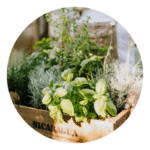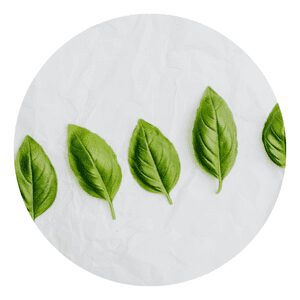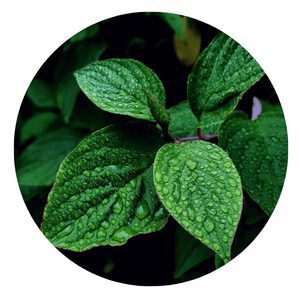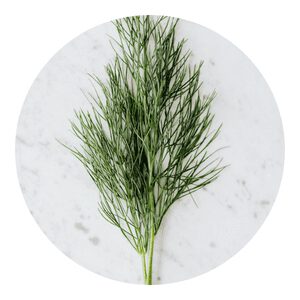How To Grow Organic Lavender
Lavender is a beautiful, fragrant plant that can be used in a variety of ways.
Many people choose to grow lavender because it is relatively easy to do so and does not require a lot of space.
Lavender can be grown indoors or outdoors, and can even be grown in containers.
The following tips will help you successfully grow lavender.

Lavender Menu
What is lavender?
Lavender is a beautiful, fragrant herb that has been used for centuries in culinary and medicinal dishes.
The plant is native to the Mediterranean region and has been cultivated for its unique flavor and scent.
Lavender is a member of the mint family and has a woody, evergreen shrub with violet-colored flowers.
The leaves and flowers of the lavender plant are used to make teas, extracts, oils, and soaps.
Lavender has many health benefits including relaxation, improved sleep, reduced stress levels, and relief from anxiety and depression.
The plant’s calming properties can also be helpful in treating headaches, stomachaches, and menstrual cramps.
In addition to its medicinal uses, lavender is also a popular ingredient in perfumes, potpourris, sachets, candles, and cosmetics.
The benefits of growing organic lavender
Organic lavender has a wide range of benefits, from its soothing scent to its many uses in natural medicine.
Growing your own organic lavender is easy and rewarding, and you’ll be able to enjoy these benefits year after year.
Lavender has a long history of use as a medicinal herb. It’s been used to treat everything from anxiety and insomnia to stomach issues and skin conditions.
Lavender oil is also a popular home remedy for headaches and migraines.
In addition to its many health benefits, lavender is also a beautiful addition to any garden.
Its purple flowers add color and fragrance, and the plant itself is relatively low-maintenance.
With a little care, you can enjoy fresh lavender blooms for years to come.
The best way to grow organic lavender
Organic lavender is one of the most popular herbs to grow.
Not only is it beautiful, but it has a wide range of uses.
Here are some tips on how to grow organic lavender.
Lavender prefers full sun and well-drained soil. If you live in an area with hot summers, consider planting your lavender in a spot that gets afternoon shade.
To encourage growth, make sure to fertilize your lavender regularly.
An organic fertilizer rich in phosphorus will help encourage blooming.
Lavender is a drought-tolerant plant, but it still needs regular watering during its first growing season.
Once established, water your lavender deeply once a week during periods of extended dry weather.
How to care for organic lavender
Organic lavender is a beautiful and fragrant addition to any home.
While it is relatively easy to care for, there are a few things you should keep in mind to ensure your lavender thrives.
First, organic lavender needs full sun to grow properly. If you live in an area with hot summers, partial shade may be necessary to prevent the plant from burning.
Second, organic lavender prefers well-drained soil. Be sure to plant in a location that does not stay wet after a rainstorm or water your lavender regularly to prevent the roots from rotting.
Finally, organic lavender is susceptible to pests and diseases.
Inspect your plants regularly for signs of problems and address them quickly if you see anything suspicious.
With proper care, your organic lavender will thrive and fill your home with its lovely fragrance.
Glease let grown my lavender, Let it flourish in the sun. I love to herbs' sweet scent It's a pleasure for everyone. Sprays of purple and grey, Creating a colorful array. The calming aroma lingers, My organic lavender illuminates its splendor.
Chappy The Gardener
How to harvest organic lavender
If you’re interested in growing and harvesting your own organic lavender, there are a few things you should keep in mind.
First, lavender thrives in well-drained soil with full sun exposure.
You’ll also need to water your lavender regularly, especially during the hot summer months.
To harvest your lavender, wait until the flowers are fully bloomed and then cut the stems about an inch or two above the ground.
You can then dry your lavender by hanging it upside down in a cool, dark place.
Once it’s dried, you can use it for a variety of purposes, such as making homemade potpourri or sachet bags.
The importance of organic lavender
Organic lavender is a beautiful and fragrant herb that has many benefits.
Not only is organic lavender a great addition to any garden, but it can also be used in cooking, cosmetics, and even as a natural remedy for anxiety and stress.
Lavender is a hardy plant that does not require much care. However, there are a few things to keep in mind when growing organic lavender.
First, lavender prefers well-drained soil and full sun.
Second, organic lavender should be planted in early spring or fall.
Finally, when watering organic lavender, be sure to avoid getting water on the leaves as this can cause fungal diseases.
Organic lavender is a versatile plant with many uses.
The best organic fertilizer for lavender
Organic lavender is one of the most popular plants in gardens and balconies all over the world.
Growing organic lavender requires careful attention and a good understanding of what kind of fertilizer it needs to thrive.
The best organic fertilizer for lavender is anything that contains high nitrogen, low phosphorus, and moderate potassium.
Nitrogen promotes healthy vegetative growth, phosphorus helps develop strong roots and flowers, while potassium increases water retention capacity in soil.
Organic fertilizers such as compost or manure are ideal for supplying these essential nutrients to lavenders’ delicate root systems.
Composted manure is especially beneficial because it not only provides the required nutrients but also some additional trace elements like iron, copper, zinc, manganese which can help improve soil structure and optimize drainage properties.
Are lavender easy to grow?
Are lavender easy to grow? That’s a question that many gardeners have asked themselves before taking on the task of growing this fragrant herb.
Lavender is indeed quite an easy plant to cultivate, making it perfect for novice green thumbs.
It can be grown in soil, as well as in containers and other pots both inside and outside of the home.
Plus, with minimal care and attention it can produce a beautiful scent and calming atmosphere all year round!
To successfully grow organic lavender you will need to ensure it has plenty of sun exposure (at least 6 hours per day), well-draining soil that’s been amended with some compost or manure, regular pruning of dead stems, watering when needed but allowing time for soil to dry between sessions, protection from strong winds and reliable natural pest control methods.
Where does lavender grow best?
Lavender is a fragrant and beautiful flower that is popular for its relaxing properties.
It grows easily in many climates, but it does best in areas with lots of sun and well-draining soil.
Growing organic lavender can be tricky because it requires specific environmental conditions to thrive.
In this article, we will explore the different regions where lavender grows best so you can have success growing your own organic crop.
Areas with hot summers, mild winters and dry air are ideal for growing lavender since the plant thrives in climates with long periods of sunshine.
Mediterranean countries like France and Italy are known for producing some of the finest varieties of lavender due to their warm climate and nutrient-rich soils.
These countries produce lavenders with intense aromas as compared to other parts of the world.
Does lavender come back every year?
Lavender is a beautiful, fragrant flower with an unmistakable scent. As an added bonus, it’s also incredibly easy to grow and maintain!
Lavender can be grown in almost any climate or soil type, making it an ideal addition to any garden.
But one of the most common questions asked by growers is whether lavender will come back every year after planting.
The answer is yes! Depending on the variety and climate you are growing in, lavender may even come back year after year without having to replant each season.
To ensure that your lavender returns each spring, provide adequate drainage for your plants and make sure soil temperatures don’t drop below 55 degrees Fahrenheit during winter months.
Additionally, low-stress pruning practices should be used to encourage new growth – cutting too much off of the plant can lead to fewer blooms over time.
Does lavender do well in pots?
Growing organic lavender is one of the most rewarding garden tasks.
Not only does it look beautiful and smell delightful, but this hardy perennial can be grown in many different ways.
However, some people struggle with choosing the best way to grow their lavender plants. Does lavender do well in pots?
The answer is yes!
Lavender makes an excellent container plant and can thrive in a pot for years if it’s placed in a sunny spot and provided with regular watering and good drainage.
When potted, lavender should be given plenty of room to spread its roots – choose a pot that’s at least twice as wide as the root ball of your plant.
A mix of soil-less compost, sand and gravel will provide the best growing environment for your potted lavender; avoid using heavy clay or loam soils when planting your lavender in containers.
Can you grow lavender hydroponically?
Lavender, the aromatic flower that has graced gardens across the world for centuries, can now be grown in a hydroponic garden.
Hydroponics is a method of growing plants without soil by supplying them with nutrient-rich water instead.
This type of gardening system can provide many benefits over traditional methods and growing lavender hydroponically brings additional benefits specific to this plant.
The fragrant blooms of lavender are often used in aromatherapy, cosmetics, and culinary dishes.
Lavender is also known to repel pests like mosquitoes and moths which makes it an ideal choice for indoor or outdoor gardens.
By using hydroponics you can take control of the nutrition your lavender receives while cutting down on water waste and increasing yield potential.
Can you grow lavender aquaponics?
Organic lavender has a variety of uses, from flavoring recipes to being used as an herbal remedy.
But did you know that it can also be grown with aquaponics? Aquaponics is a type of closed-loop system where fish and plants are grown together in harmony.
The fish provide the nutrients for the plants, while the plants filter and clean the water for the fish – creating a mutually beneficial environment.
With this technique, it is possible to grow organic lavender with minimal effort and maximum results!
Aquaponic systems are becoming increasingly popular among gardeners who want to cultivate their own herbs and vegetables without having to manage multiple beds or containers.
Lavender grows best when exposed to plenty of sun and adequate drainage; both of which can be provided within an aquaponic system.
How to grow lavender in a raised beds
Organic lavender is a fragrant, versatile plant that is easy to grow in raised beds.
Whether you want to add color and fragrance to your garden, or use it for culinary purposes, growing organic lavender in raised beds can be rewarding and enjoyable.
The soil in a raised bed warms up faster than the surrounding soil, allowing you to get an early start on the growing season. Knowing how to properly care for your lavender plants will ensure they thrive and reach their full potential.
Here’s what you need to know about growing organic lavender in raised beds.
When choosing a spot for your lavender, look for one that gets full sun exposure and has well-draining soil.
Raised beds offer an ideal solution since they can be filled with nutrient-rich soil and compost mix made specifically for growing herbs like lavender.
What happens if you don't prune lavender?
If you’re looking to add a touch of beauty and tranquillity to your garden, organic lavender is the perfect choice.
But if you don’t prune it correctly, you may be left with an overgrown mess that’s difficult to manage.
Without proper pruning and maintenance, lavender can become leggy and produce fewer flowers than desired – so it’s important to understand why it needs regular trimming.
Pruning encourages new growth and keeps plants healthy, but for lavender specifically it helps promote more compact plants with clustering blooms.
If left unpruned, the stems become too tall; this causes them to flop over or spread out haphazardly in all directions.
What month does lavender bloom?
Lavender is a stunning plant that adds color and fragrance to any garden.
With its majestic purple flowers, it is no wonder why lavender has become one of the most popular plants for growing in many parts of the world.
But when does lavender bloom? It is important to know when you should expect your lavender plant to bloom in order to properly care for it and ensure maximum blooms and harvests.
Generally, lavender blooms during late spring or early summer months.
Depending on the variety of lavender grown, it can begin flowering as early as April or May and continue until August or even September.
However, if planted in a warmer climate with a longer growing season, some varieties may bloom all year round.
What to plant next to lavender
One great option is rosemary, as they are both members of the same family (Lamiaceae).
Rosemary has gray-green foliage and produces white flowers in spring or summer.
When planted near each other, these two plants enhance each other’s aromas for a truly delightful scent in your outdoor space.
Additionally, if you want something with more height than rosemary, consider planting sage or thyme nearby as well.
In conclusion,growing organic lavender is a great way to enjoy the beauty and calming aroma of this herb.
It can be planted in the garden, grown in containers indoors or outdoors, and even used as an air freshener.
With proper care, you can have a harvest of fragrant blossoms for years to come.
Additionally, you will be able to reap the benefits of its medicinal properties and use it in culinary applications or cosmetics.
Click To Grow
Helps Us Grow – Share If You Like

















